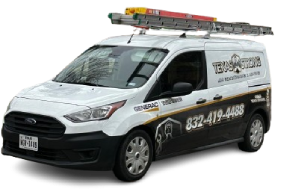
How much does a 5 ton HVAC unit cost ?
In the United States, an average-sized residential HVAC unit (5-ton) costs between $9,000 and $15,000 to install. The cost depends on the type of system, brand, efficiency rating, and the complexity of the installation.
A 5-ton HVAC system is suitable for homes sized between 2,500 to 3,000 square feet, including a heating and cooling component. The total costs include the HVAC unit, labor, the potential for ductwork improvements, permits, and any additional upgrades such as smart thermostats or high-efficiency filters.
Here is how to break down the expenses:
- HVAC Unit (5 Ton): $4,500 – $8,000 per unit, depending on its brand and SEER rating.
- Installation (labor): $2,500 – $4,000 per unit, depending on the market and scope of work.
- Ductwork adjustments/upgrades (if applicable): $1,000 – $3,000.
- Permits and inspection (added fees): $150 – 500 (dependent on local codes).
- Additional components, Such as smart thermostats, zoning systems, and UV filters, can add upwards of $500.
The above costs should have given you a rough estimate of what a residential (5 ton) HVAC system is going to cost.
What are the installation and additional material charges for HVAC systems ?
The price of the HVAC unit, installation, and material costs for entire systems usually cost between $2,000 and $5,000 in the United States. The price range will be dependent on various aspects, including the size of the system, specifics of the house layout, etc.
The installation and material costs are different from the price of the HVAC unit and include set-up, labor, and all the essential parts for a proper, safe, and efficient installation.
Below, we include what is normally included with installation and material costs:
- Professional installation labor: $1,500–$3,000 based on job complexity and location.
- Refrigerant lines and insulation: $200–$500 based on length.
- Electrical wiring or upgrades: $300–$600 for a new breaker or power supply.
- Thermostat (standard or smart): $100–$400 based on variety.
- Drain lines and PVC piping: $150–$300.
- Mounting pad or rooftop stand: $100–$250 based on install location.
- Ductwork alterations (if needed): $500–$2,000 for modifying or sealing ducts.
- Miscellaneous materials: Copper tubes, fittings, fasteners, and sealants could add another $100–$300.
- Permit and inspection fees: $100–$500 based on local codes.
On average, homeowners should expect installation and materials costs to be between $3,000 to $4,000, but likely to be higher for more complicated projects. Always ask for a written, detailed quotation that separates the equipment cost for a hassle-free installation process.
If someone begins searching for a new air conditioner in which he or she will be involved in finding ac installation houston for a particular purpose, will he or she become dizzy or in need of assistance? First, one needs to select the correct AC unit size to satisfy the requirements of the application in hand. For instance, everybody has his/her house, and so the air conditioning system cannot work in the same way for all houses. The system you are about to purchase will measure, the tons of which are going to ensure that your home remains cool in summer. Here, we will try to elaborate on how much is a 5 ton air conditioning unit and the cost factors.
Suitable Places to Install a 5 Ton Air Conditioner
A 5 ton air central air conditioner has a cooling capacity of 60000 BTUs and is commonly found in bigger homes that could cover an area of about 26300 to 33000 square feet of space. However, when considering the general principle, the factors include the number of square feet, while the size of the air conditioner could be depending on a number of factors. Other factors include:
- Geographical location of your property
- Number of windows in your home
- The extent that your windows and ceilings are insulated.
How much is a 5 Ton Air Conditioner?
A big house will require a greater capacity air conditioner, which is costlier compared to smaller ones with 2 tons, 3 tons, or 4 tons, depending on the size of the HVAC unit. For a new 5-ton air conditioner, you will spend approximately $6,750, within the range of $4,300 and $8,800. Let’s delve into the estimated cost to replace a 5 ton air conditioning unit.
Average Breakdown of 5 Ton Air Conditioner Prices:
- Indoor furnace & outdoor AC unit removal: $400
- New indoor furnace & outdoor AC unit installation: $ 8,900
- Plenum, line set, and drain reconnection: $750
- New filter dryer, safety switch, locking cap, and thermostat installation: $970
- System calibration and commission: $630
Which Factors Influence a 5 Ton AC Unit Cost?
Brand
Top-rated brands usually have a higher upfront cost but could provide more reliability and high efficiency, accompanied by a better warranty than the less known.
Efficiency level
Higher Seasonal Energy Efficiency Ratios (SEER) rating = more efficient central air conditioner But a higher SEER means more bucks. The price only goes up with a new unit and more efficiency ratings.
HVAC add-ons
Your HVAC contractors might offer a variety of additional features, including advanced thermostats and air cleaning systems, for your heating and cooling system. Consider these additional add-ons along with ac maintenance cost with the above and weigh them carefully according to your home comfort needs and budget.
AC Installation requirements
Other expenses that can impact the overall cost are electrical upgrades, new ductwork, or permits.
Location
The area you reside in can affect a 5 ton AC unit price as well. Rural areas are cheaper than big cities.
Compressor type
While two-stage and variable-speed compressors are more efficient as well as offer better comfort, it is also true that they come with a price premium compared to single-stage units—those which operate at 100% whenever they operate.
Comparing the Standard Cost and Discharge Cost of a 5 Ton AC Unit
From a cost perspective, this represents massive savings when compared to the normal models, even more on the side discharge HVAC unit. The side discharge units are more cost-effective than the traditional variable speed HVAC unit. These systems run quietly and are more compact, in addition to being variable speed, which is the reason consumers prefer them. Keep in mind when budgeting that the streamlined design and increased performance of side discharge units often mean a lower bottom line cost for a 5 ton HVAC system. Budget-conscious homeowners with a mind for noise abatement should give this innovative HVAC unit due consideration, both as an asset and an additive to your pocket.
Standard Unit
Standard HVAC units have their share of advantages and disadvantages. The plus side to this is that they tend to be more energy-efficient, yielding better performance with lesser energy consumption. More options are available in standard units, and this gives you ease into more choice to get the kind of HVAC systems you need. In contrast, the downside with the standard outdoor unit is that it is larger in size and requires more space for its installation. This may be a limiting factor since it is larger in size when there is space limitation or the client wants it neater and sleeker. The standard units are usually noisier, and thus this can determine indoor space comfort. Combining these aspects, this side discharge is much compared to a standard unit; a variable speed in standard units can go up much higher in upfront cost. Both of these advantages and disadvantages have to be weighed in finding the balance in choosing an HVAC system that meets both of your goals of efficiency and practicality.
Discharge Unit
The advantages and disadvantages of side discharge HVAC units are many. They bring in a very compact design, making them space-efficient and ideal for those installations that have little room left. They implement variable-speed technology for higher energy efficiency and provide precise climate control. Further, quieter operations promise an enjoyable indoor experience. However, because of the limitations in their size, even though side discharge units offer variable-speed capabilities, they cannot always compete with some conventional systems in terms of energy efficiency. The limited availability of heat pumps or dual-fuel configurations could further reduce choices for those with very particular HVAC needs. Possibly, addressing these cons in development could bring side discharge units into the mainstream.




